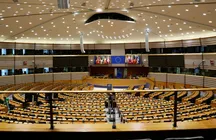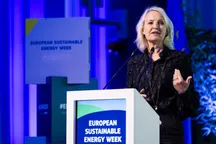Electrolytic hydrogen production and its various uses are leading to new types of energy and chemical industry systems which allow linking of sectors such as transport, as well as, hard to abate industrial sectors, electricity production and energy storage. In line with EU policies (EU Hydrogen strategy and REPowerEU Plan) a massive deployment of electrolytic systems with a scale up to multi-MW is expected. This implies maintaining performances and efficiency as well as optimising them, by reducing the use of critical raw materials, improving purification systems for the feedwater and complex balance of plant alongside the need to extend the durability against transient, dynamic or harsh conditions as well as, the overall lifetime of the system.
Some issues experienced have been, to some extent, overcome in the case of big industrial installations. Despite of that, the progress in all, and especially local, remote, and distributed, electrolytic systems can easily be fostered by leaving aside the water purification step as well as the use of low Platinum group metals (PGM)-based catalysts maintaining reasonable trade-off between cost and durability, as well as, other advanced materials and components such as membranes, ionomers, coatings, Porous Transport Layer (PTLs), bipolar plates etc.).
On the other hand,
...




